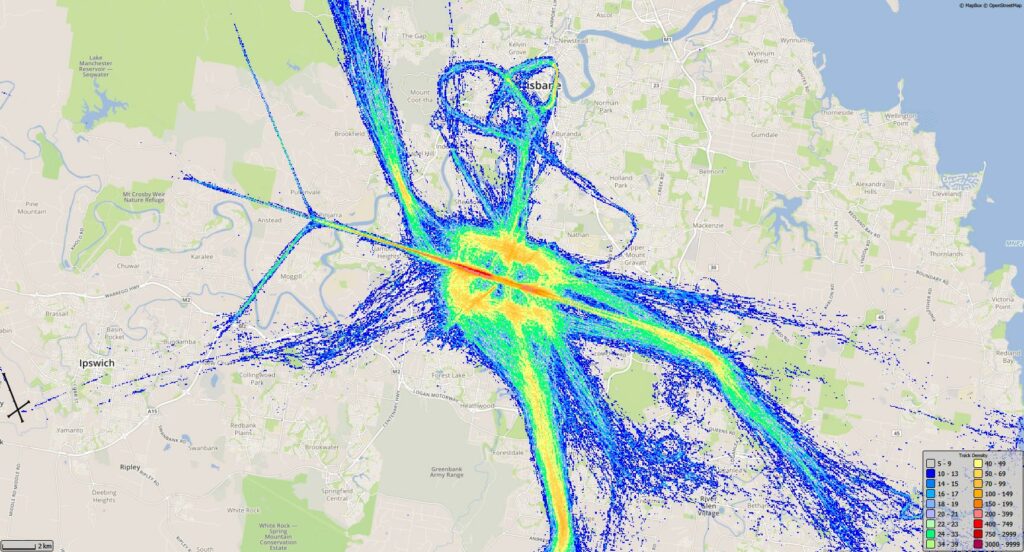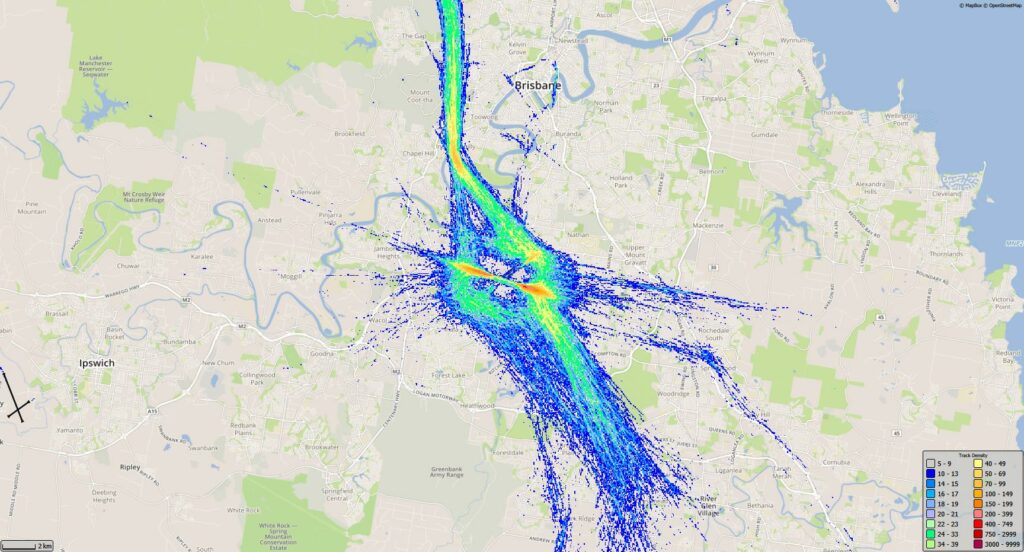Archerfield Airport flight paths
Archerfield Airport is a large general aviation airport catering for charter flights, flight training, aircraft maintenance and emergency response units, both fixed wing and helicopters.
Archerfield Airport operates 24 hours a day, seven days per week. It is Brisbane’s secondary airport and Queensland’s major centre for general aviation activities.
Noise abatement measures are taken on the ground such as designated run-up bays and specific helicopter landing areas.
Flight paths
The majority of aircraft using Archerfield Airport fly under Visual Flight Rules (VFR). There are designated routes for VFR aircraft to ensure that VFR traffic remains separate from aircraft flying under Instrument Flight Rules (IFR). It is not mandatory that VFR aircraft fly these routes, but many do, especially as they approach or depart airports. These routes are outside controlled airspace.
VFR routes include defined entry and exit points to and from controlled airspace. These are landmarks that are easily seen by the pilot from the air. These landmarks are highlighted in the images below, which also show the average percentage of arrivals or departures that use the route.
There is no minimum altitude for aircraft in the process of landing. Aircraft will generally descend on a glide slope of three degrees.
The altitude of aircraft after departure will depend on factors such as the type of aircraft and its weight, how heavily laden it is with fuel and passengers, and the atmospheric conditions at the time. All these factors affect an aircraft’s climb rate. There is no regulated minimum altitude for an aircraft in the process of taking off.
The below images are an example of standard flight paths into and out of the airport on a normal day.

Shown below are track densities for Archerfield from January to March 2020. A track density is generated by overlaying a grid on the map, and coloring that grid based on a count of how many operations passed through each grid square. Cooler colours are used for low counts, and warmer colours for high traffic.




